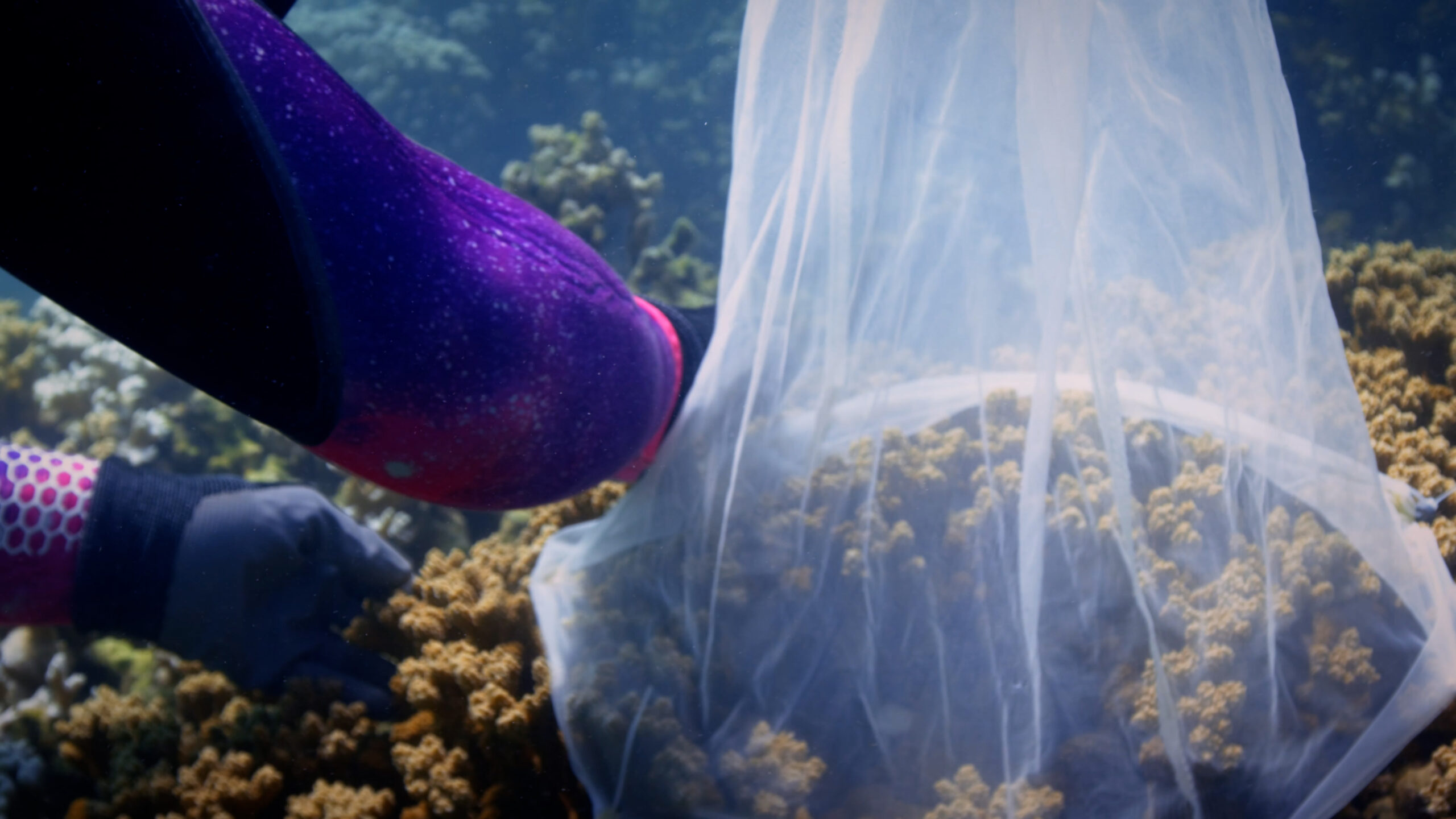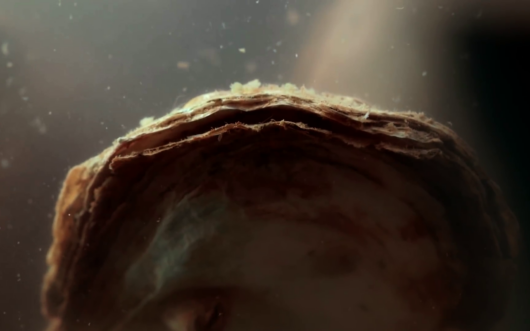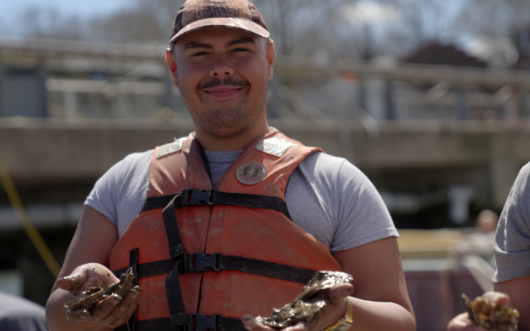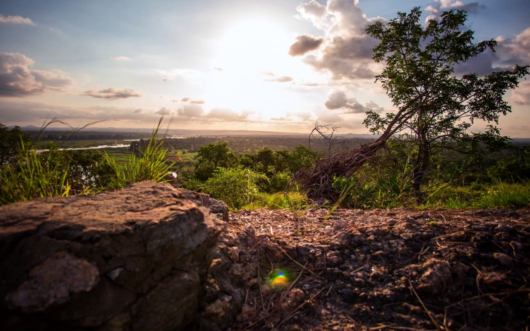Bring coral, climate resilience, and ocean science into your classroom.
In Coral Comeback, researchers at the Coral Resilience Lab in Hawaii selectively breed corals to withstand rising ocean temperatures and give reefs a chance to survive. This educator guide supports classroom discussion, NGSS-aligned learning, and hands-on opportunities for student engagement.
GRADES
9 – 12+
SUBJECTS
Biology, Storytelling, Ecology
Episode Overview
“If we prepare the reefs now for the future, then they have a better chance at surviving.” – Kira Hughes, Marine Biologist
As global warming drives up ocean temperatures and extreme near-shore heat events become more frequent, corals have become increasingly vulnerable to coral bleaching events. In Coral Comeback we learn how marine biologist Kira Hughes and other researchers at the Coral Resilience Lab at the University of Hawaii in Oahu are working to reverse the effects of coral bleaching. The team is providing hope for the future of corals and the reef ecosystems they build by selectively breeding corals to be able to withstand ever-increasing amounts of heat stress, both for now, and in the future.
Focus Questions
- Why are corals considered a keystone species in ocean ecosystems?
- What is coral bleaching and what role does it play in the function of coral reef ecosystems?
- What is selective breeding and how is this technique used to conserve coral reef ecosystems?
Key Concepts
- Threatened and Endangered Species: The International Union for the Conservation of Nature lists more than 44,000 species threatened with extinction, which includes 36% of coral species. Loss of livable near-shore ocean conditions (habitat loss) through warming waters and ocean acidification are the primary drivers of this crisis.
- Biodiversity: Coral reefs harbor the greatest biodiversity of any global ecosystem; they support about 4,000 species of fish along with hundreds of other marine organisms; over 25% of all marine life. However, coral reefs are currently among the most threatened ecosystems on Earth, largely due to a warming planet and changes in tropical climates. A loss of coral reef ecosystems through bleaching events and other ocean stressors has a significant impact on marine biodiversity.
- Ecosystem engineers: Coral polyps sequester carbonate ions and calcium from seawater to build their hard exoskeletons. By doing so, corals thus engineer the underlying framework of coral reef ecosystems.
- Keystone species: Marine biologists estimate that coral reefs maintain the greatest species richness per unit area than any other marine environment. In this way, corals are keystone species because they have a disproportionate impact on the structure of the biodiversity that coral reefs support. As coral reefs disappear thousands of species lose the habitat required for their survival.
- Ecosystem Services: Nature provides humans with benefits that are essential for human health and well- being. These free ecosystem services range from bees and other insects that pollinate crops to the provision of timber and clean water, climate regulation, and atmospheric carbon sequestration. Coral reefs provide a substantial first line of coastal protection against flooding from ocean storms. Scientists predict that without coral reefs the annual expected global damages from flooding would double, and costs from frequent storms would triple.
- Mutualistic symbiosis: The nutritional symbiosis between corals and their endocellular dinoflagellate algae (known as zooxanthellae) has been key to the success of corals and the reefs they build. For at least 210 million years corals have provided their algae with a protected environment and the compounds they need for photosynthesis while the algae produce oxygen, help the coral to remove wastes, and most importantly supply the coral with the excess products of photosynthesis like glucose, glycerol, and amino acids.
- Conservation biology: The practice of conservation biology recognizes the intrinsic value of the Earth’s natural diversity of organisms. Conservation biology works to understand how the natural world operates, how humans affect nature, and how we can use collective scientific and cultural knowledge to conserve Earth’s biological diversity.
Curriculum Connections
NGSS
- HS-LS2 Ecosystems: Interactions, Energy, and Dynamics
- LS2.A: Interdependent Relationships in Ecosystems
- LS2.B: Cycles of Matter and Energy Transfer in Ecosystems
- LS2.C: Ecosystem Dynamics, Functioning, and Resilience
- LS4.D: Biodiversity and Humans
- PS3.D: Energy in Chemical Processes
- HS-LS3 Heredity: Inheritance and Variation of Traits
- LS3.A: Inheritance of Traits
- LS3.B: Variation of Traits
- HS-LS4 Biological Evolution: Unity and Diversity
- LS4.A: Evidence of Common Ancestry and Diversity
- LS4.B: Natural Selection
- LS4.C: Adaptation
- ETS1.B: Developing Possible Solutions
For complete list of curriculum connections including AP & IB standards, refer to full PDF.




